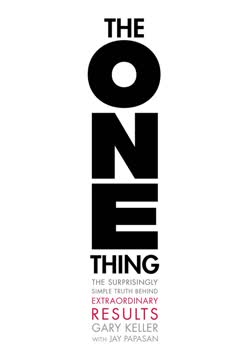つの重要なポイント
1. 80/20の法則:普遍的な不均衡の法則
80/20の法則は、少数の原因、入力、または努力が通常、大多数の結果、出力、または報酬につながることを主張する。
普遍的な不均衡。 80/20の法則、別名パレートの法則は、人生やビジネスのさまざまな側面を理解し改善するための強力なツールである。この法則は、約80%の効果が20%の原因から生じることを示唆している。この原則は多くの分野に適用される:
- 経済学:20%の人口がしばしば80%の富を所有している
- ビジネス:20%の製品や顧客が通常80%の利益を生み出す
- 私生活:20%の活動が80%の満足を生み出す
実践的な応用。 この不均衡を認識することで、真に重要な少数の要因に焦点を当てることができる:
- 最も生産的な20%の努力を特定し、それを強化する
- 生産性の低い80%の活動を最小限に抑えるか排除する
- この原則を時間管理、人間関係、個人の目標に適用する
2. 80/20分析を活用してビジネスパフォーマンスを向上させる
素晴らしいものを創造する最良の方法は、シンプルなものを創造することである。
戦略的焦点。 80/20分析は、企業が最も利益を上げる分野を特定し、リソースを最適化するための強力なツールである。主なステップは以下の通り:
- 80%の利益を生み出す20%の製品、顧客、または活動を特定する
- これらの高パフォーマンス分野により多くのリソースを配分する
- 低パフォーマンスのセグメントを合理化または排除する
データ駆動の意思決定。 80/20分析を使用して:
- 製品ラインを洗練する
- マーケティング活動をターゲット化する
- 主要顧客への顧客サービスを改善する
- 在庫管理を最適化する
重要な少数に焦点を当てることで、企業はパフォーマンスと利益を劇的に向上させることができる。
3. シンプルさ:ビジネスの可能性を引き出す鍵
シンプルは美しい。ビジネスパーソンは複雑さを好むようだ。シンプルなビジネスが成功すると、マネージャーはすぐにそれを非常に複雑にするために膨大なエネルギーを注ぎ込む。
シンプルさを受け入れる。 複雑さはしばしば非効率と利益の減少を招く。シンプルさの力を活用するためには:
- 製品の提供を合理化する
- ビジネスプロセスを簡素化する
- コアコンピタンスに焦点を当てる
- 非本質的な機能をアウトソーシングする
複雑さを克服する。 マネージャーはしばしば以下の理由で簡素化を拒む:
- 変化への恐れ
- 既存のシステムへの執着
- 複雑さが洗練さを意味するという誤った信念
シンプルさを受け入れることで、企業は:
- コストを削減する
- 顧客満足度を向上させる
- 市場の変化に対する敏捷性と応答性を高める
- 全体的な利益を増加させる
4. 最大の影響を与えるための重要な顧客への焦点
成果と幸福の80%は、私たちの時間の20%の中で生じる—そしてこれらのピークは大いに拡大できる。
顧客の優先順位付け。 すべての顧客が同じ価値を持つわけではない。影響を最大化するためには:
- 80%の利益を生み出す20%の顧客を特定する
- これらの重要な顧客に卓越したサービスを提供する
- これらの関係を維持し成長させるための戦略を開発する
戦略的リソース配分。 努力を以下に集中させる:
- 主要顧客のニーズを理解する
- 彼らの要求に合わせた製品やサービスを開発する
- 高価値顧客向けのロイヤルティプログラムを作成する
- 主要アカウントに対して優れたサービスを提供するためにスタッフを訓練する
最も価値のある顧客に集中することで、顧客満足度、ロイヤルティ、全体的なビジネスパフォーマンスを大幅に向上させることができる。
5. 時間革命:生産性と幸福の最大化
時間が不足しているわけではない。実際、私たちはそれに溺れている。私たちは時間の20%しか有効に活用していない。
時間の豊かさのマインドセット。 時間を不足しているものと見なすのではなく、私たちには十分な時間があるが、しばしば非効率的に使っていることを認識する。時間に対するアプローチを革命的に変えるためには:
- 80%の結果や幸福を生み出す20%の活動を特定する
- これらの高価値活動に費やす時間を増やす
- 低価値のタスクを排除または委任する
実践的な時間管理。 これらの戦略を実施する:
- 80/20ルールを使用してタスクの優先順位を付ける
- 効率のために類似の活動をまとめる
- 明確な境界を設定し、「ノー」と言うことを学ぶ
- 集中した作業のために中断のない時間を作成する
- 定期的に時間配分を見直し調整する
高影響の活動に焦点を当て、時間の無駄を排除することで、生産性と個人の満足度を劇的に向上させることができる。
6. インテリジェントな怠惰によるキャリア成功
オフィサーには4つのタイプしかいない... 最後に、インテリジェントな怠惰な者たちがいる。彼らは最高の地位に適している。
戦略的効率。 「インテリジェントな怠惰」の概念は、最も成功した人々が少ない努力でより多くを達成する方法を見つけることを示唆している。この原則を適用するためには:
- 自分の強みに合った高影響のタスクに焦点を当てる
- 低価値の活動を委任または自動化する
- 作業を合理化するためのシステムやプロセスを開発する
キャリアの向上。 効率的にキャリアを上昇させるためには:
- 自分のユニークな才能を特定し育成する
- 自分の強みを最大化し、弱みを最小化する役割を求める
- 有能な同僚や部下のネットワークを構築する
- 努力に対する価値比率を高める方法を常に探る
より賢く働くことで、より大きな成功を収めながら、バランスの取れた充実した生活を維持することができる。
7. 幸福の七つの習慣:感情知能を育む
気質は運命ではない。
感情知能。 幸福はあらかじめ決まっているものではなく、感情知能を育むことで培うことができる。幸福の七つの習慣は以下の通り:
- 毎日の身体運動
- 精神的刺激
- 精神的または芸術的刺激
- 親切な行為
- 友人との質の高い時間
- 自己 indulgence
- 自己称賛
実践的な応用。 幸福を高めるためには:
- これらの習慣を日常生活に取り入れる
- 喜びと充実感をもたらす活動に焦点を当てる
- ポジティブな人間関係を育む
- 感謝とマインドフルネスを実践する
- 感情知能の向上に継続的に取り組む
これらの習慣を通じて幸福を積極的に追求し、感情知能を育むことで、全体的な幸福感と生活満足度を大幅に向上させることができる。
最終更新日:
FAQ
What's The 80/20 Principle by Richard Koch about?
- Core Concept: The book introduces the 80/20 Principle, which suggests that 80% of results come from 20% of efforts. This principle is applicable across various aspects of life, including business and personal relationships.
- Applications: Richard Koch illustrates how this principle can be applied to enhance efficiency and effectiveness in business, personal productivity, and time management.
- Life Enhancement: Beyond business, the book emphasizes improving personal happiness and fulfillment by focusing on what truly matters in life.
Why should I read The 80/20 Principle by Richard Koch?
- Transformative Insights: The book provides practical insights that can lead to significant improvements in both personal and professional life by prioritizing impactful activities.
- Proven Success: Koch shares examples and case studies demonstrating successful implementation of the 80/20 Principle in various organizations, leading to increased profitability and efficiency.
- Simplicity and Clarity: The writing is accessible and engaging, making complex ideas easy to understand and apply, helping readers grasp the principle's importance and relevance.
What are the key takeaways of The 80/20 Principle by Richard Koch?
- Focus on the Vital Few: Identify and concentrate on the 20% of activities that yield 80% of the results for greater efficiency and effectiveness.
- Challenge Conventional Wisdom: The book encourages questioning the belief that all inputs are equally valuable, highlighting the importance of recognizing key factors.
- Embrace Simplicity: Koch advocates for simplifying processes to enhance productivity by eliminating unnecessary tasks and focusing on what truly matters.
What are the best quotes from The 80/20 Principle by Richard Koch and what do they mean?
- “A minority of causes...”: This quote encapsulates the essence of the 80/20 Principle, emphasizing the importance of identifying key success factors.
- “The 80/20 Principle is the cornerstone...”: Highlights the transformative potential of applying the principle in everyday life for greater satisfaction and achievement.
- “Simplicity is beautiful.”: Underscores the idea that reducing complexity can lead to improved efficiency and effectiveness.
How can I apply the 80/20 Principle in my work?
- Identify Key Tasks: Analyze daily tasks to determine which contribute most to your goals and focus energy on these high-impact activities.
- Evaluate Customer Relationships: Identify the 20% of clients generating 80% of revenue and prioritize building strong relationships with them.
- Streamline Processes: Simplify workflows by eliminating unnecessary steps and focusing on the most effective methods to increase efficiency.
How can I apply the 80/20 Principle in my personal life?
- Identify Key Relationships: Focus on the 20% of relationships that bring the most joy and fulfillment, nurturing these connections.
- Evaluate Activities: Assess daily activities to determine which yield the most happiness or satisfaction, increasing time spent on these.
- Set Clear Goals: Use the principle to set personal goals aligning with values and passions, focusing efforts on what truly matters.
What is the difference between 80/20 Analysis and 80/20 Thinking in The 80/20 Principle by Richard Koch?
- 80/20 Analysis: A systematic, quantitative method of comparing causes and effects to identify the most impactful factors, involving data gathering.
- 80/20 Thinking: An intuitive approach encouraging individuals to hypothesize about key factors affecting outcomes, allowing quicker decision-making.
- Complementary Methods: Both methods are valuable; analysis is useful for critical decisions requiring data, while thinking can be applied for faster insights.
How does the 80/20 Principle relate to time management?
- Prioritization: Helps identify which tasks are most important and should be prioritized, focusing on the 20% yielding the most significant results.
- Eliminating Time Wasters: Recognizing that 80% of activities may contribute little to success allows for eliminating or delegating low-value tasks.
- Work-Life Balance: Encourages focusing on what truly matters, both professionally and personally, enhancing overall satisfaction.
What are some practical examples of the 80/20 Principle in business?
- Customer Profitability: Often, 20% of customers generate 80% of profits; focusing on these key customers can lead to more effective strategies.
- Productivity Analysis: Employees can find that a small number of activities contribute to the majority of their output, enhancing productivity by prioritizing these tasks.
- Resource Allocation: Businesses can allocate resources more effectively, ensuring impactful projects receive necessary attention and funding.
What are some common misconceptions about the 80/20 Principle?
- Misunderstanding Proportions: Many assume the 80/20 ratio is fixed; in reality, it serves as a guideline, and actual proportions can vary widely.
- Overlooking the Soft Side: Critics argue it only applies to quantitative measures, ignoring its relevance in qualitative aspects like relationships.
- Assuming Simplicity Equals Easy: While advocating for simplicity, effective implementation requires effort and introspection to identify vital factors.
What are the potential pitfalls of ignoring the 80/20 Principle?
- Wasted Resources: Failing to recognize the vital few can lead to misallocation of time, money, and effort on low-impact activities.
- Complexity Overload: Ignoring the principle may result in unnecessary complexity, leading to inefficiencies and increased costs.
- Missed Opportunities: Not focusing on impactful factors may overlook significant opportunities for growth and improvement.
How can I measure the effectiveness of the 80/20 Principle in my life?
- Track Outcomes: Keep a record of activities and their outcomes to identify which yield the most significant results, refining focus over time.
- Reflect Regularly: Set aside time for regular reflection on goals and achievements, assessing time spent on the right activities.
- Seek Feedback: Engage with trusted friends or mentors for insights into progress, helping see areas for improvement and validate application.
レビュー
80/20の法則は賛否が分かれる。多くの人々はその生産性や時間管理に関する洞察を称賛し、ビジネスや私生活において価値があると感じている。読者は、高い影響力を持つ活動に焦点を当てることの重要性を強調する本書のアプローチを評価している。しかし、一部の批評家はその繰り返しの多さや深みの欠如を指摘し、核心となる概念はもっと簡潔に説明できると主張している。また、本書のビジネス以外の文脈への適用については議論があり、専門的な環境外ではあまり関連性がないと感じる人もいる。全体として、読者はこの原則の重要性を認めつつも、本書の実行や包括的な価値については意見が分かれている。
Similar Books





















